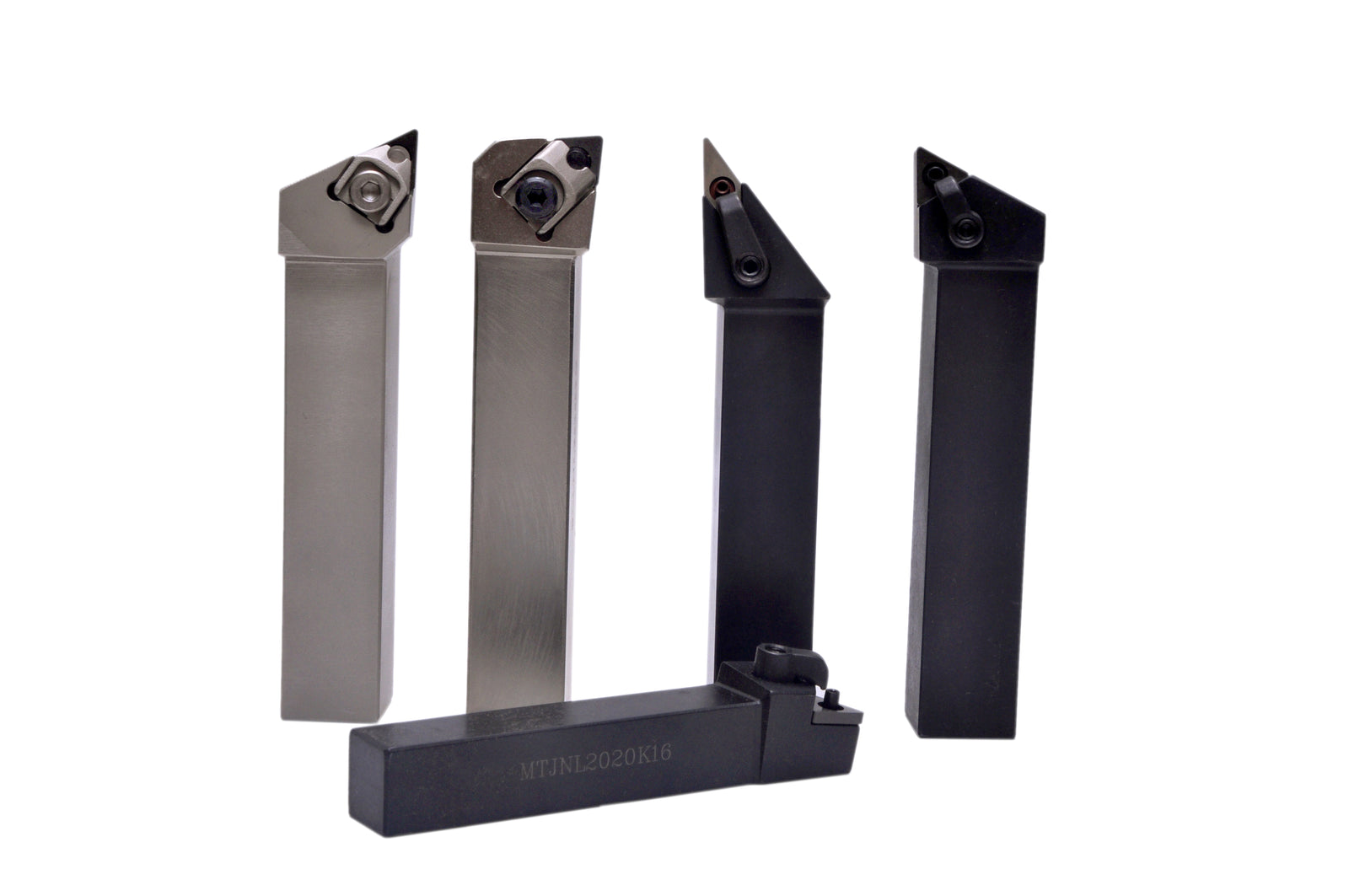Turning inserts are essential tools used in CNC turning machines for cutting and shaping workpieces. Along with turning inserts, turning holders play a crucial role in the machining process. In this blog, we will delve into the world of turning insert holders, focusing on their coding rules and clamping methods.
Holder Coding: Turning insert holders are coded to indicate various characteristics, such as insert fixation method, insert shape, holder lead angle, and more. The coding system may vary depending on the manufacturer and the standard followed. For example, in a standard coding system, the first character in a holder code represents the insert fixation method. "S" indicates screw clamping, "D" represents rigid clamping, "M" denotes top wedge lock, "P" signifies lever lock, and so on. The choice of insert fixation method depends on factors such as cutting forces, accessibility, and type of machining operation.
Clamping Methods: Turning insert holders use different clamping methods to securely hold the inserts in place during the machining process. Screw clamping, represented by "S" in the holder code, is a common method used for positive inserts, where the clearance angle is not zero. Although it is considered weak in comparison to other methods, screw clamping is compact and provides accessibility, making it suitable for internal or boring machining and operations with lower cutting forces.
Rigid clamping, represented by "D" in the holder code, is a stronger method where a pin goes through the insert hole and fixes the insert in place by pushing it downwards. However, it may not be the most suitable method for internal machining or boring due to its bulky nature. Holders used for roughing or operations generating high cutting forces may have shims made from hard material to distribute force and extend the life of the holders. Shims are replaceable components that can be easily replaced if damaged.
Other clamping methods such as top wedge lock (represented by "M" in the holder code) and lever lock (represented by "P" in the holder code) are also used, and some manufacturers may have their own specific clamping methods.
Matching Insert Shape and Holder Code: The second character in a holder code represents the insert shape, and it should match the first character of the insert code if you want to use them together. For example, if an insert has a rhombus shape with an angle of 80 degrees, its first code character will be "C". To use this insert with a holder, the holder's second code character should also be "C", matching the insert shape. This ensures that the insert fits properly in the holder and functions effectively during machining.
Holder Lead Angle: The third character in a holder code represents the holder lead angle or approach angle, which is the angle between the cutting edge and the workpiece. Different lead angles are represented by different characters, as per the standard followed. For example, if the lead angle is 93 degrees, it is represented by the character "J" in the holder code.
Conclusion: Turning insert holders play a crucial role in the machining process, providing stability and accuracy to the cutting operation. Understanding the coding rules and clamping methods for turning insert holders is essential for selecting the right holder for specific machining operations. By matching the insert shape and holder code, and considering factors such as clamping method and holder lead angle, you can ensure efficient and effective turning operations in your CNC turning machine.


1 comment
Turning tools